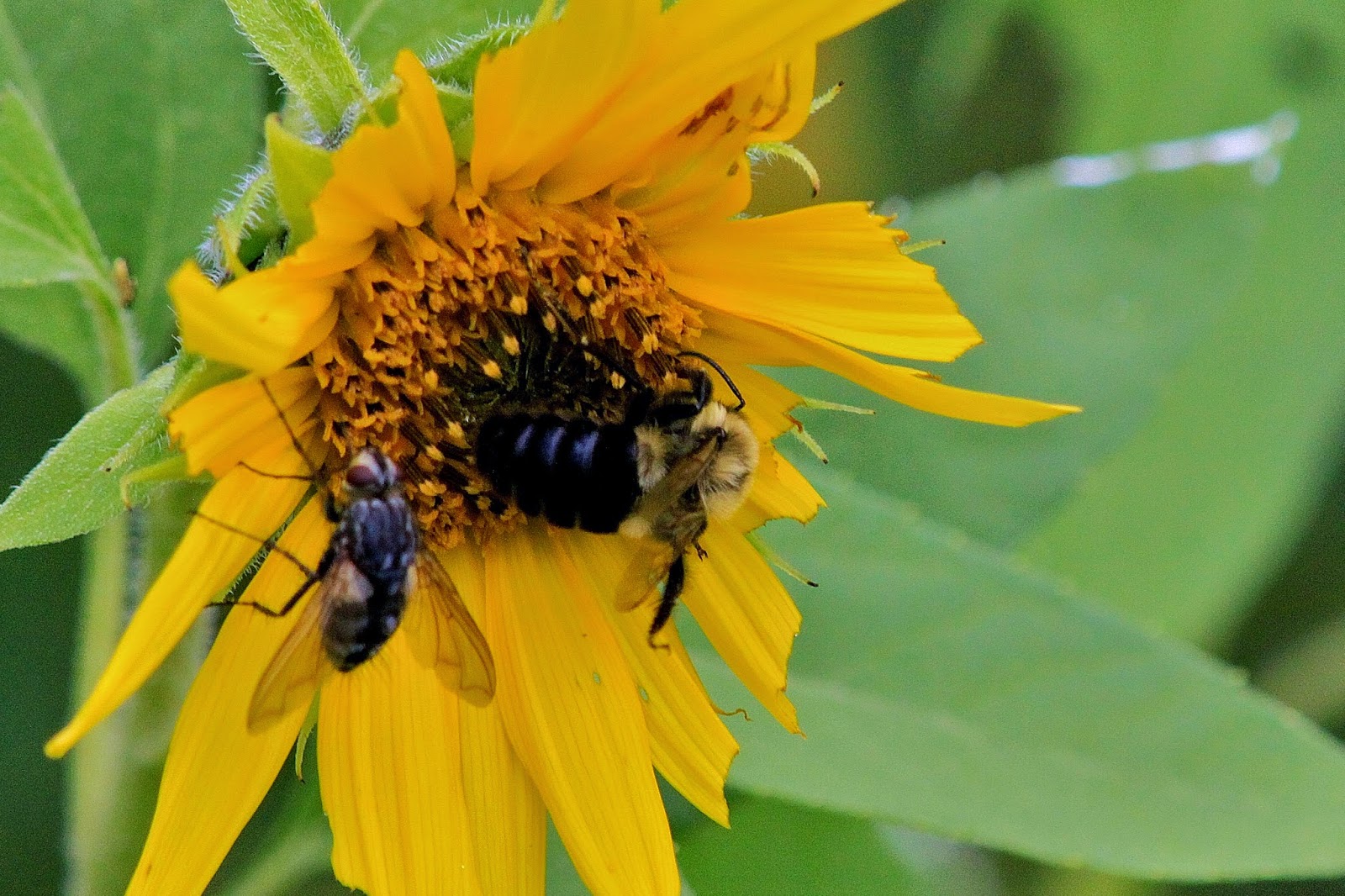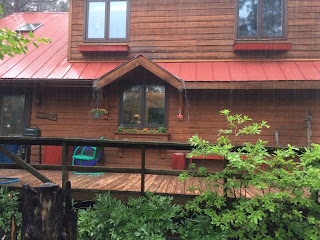September notes
Wingin’
It
By
Kate Crowley
As we reach the middle
of September my attention has been captured by various events taking place in
the winged world. First there is the
increase in Northern “yellow-shafted” flickers.
These members of the woodpecker family are only transitory in our
particular neighborhood. Each spring we watch them as they come through,
landing on the thawing ground in search of food.
Unlike the other
woodpeckers, flickers prefer terrestrial fare, mainly ants. The reverse happens in the autumn. These birds are easy to pick out when they
fly away from you, by the large white patch of feathers on their rump and their
swooping flight pattern. They will land in trees and when they do, you can see
their similarity to the other woodpeckers, especially in the tail braced on the
trunk. Their beaks are long and sharp, but have a bit of a downward curve. This
makes sense since they don’t use them to pound on wood. They will head as far
south as needed to find suitably soft soil and ant colonies.
We are at the tail end
of the ruby throated hummingbird migration. I still have a couple of feeders
set up in case any stragglers need a boost.
I have heard from others in Duluth and even further up the shore that
they are still seeing the little birds at their feeders. Laura Erickson, birder
extraordinaire of Duluth, believes that the hummers got such a late start on
nests this year, because of our extended winter that they we may be seeing more
than usual at this time of September.
You may have heard someone
say you should bring in your hummingbird feeders in the fall so that the
hummingbirds won’t be tricked into staying too long. Not true.
These birds are moving as much as because of the shortening days as the
diminishing food sources. Leaving your feeders up is just a way to provide them
with some extra energy as they head south. I’ll leave mine up a couple more weeks
and then give up for the year.
What has been most on
my mind, however are the bees. Maybe you saw the two part article in the Star Tribune
a week ago detailing the problems facing the honeybees and their keepers (as
well as us). It is a problem that most
people should be aware of by now and that is the precipitous decline in this
domesticated bees numbers. The best
scientific consensus says that the bees are suffering from long term exposure
to pesticides, loss of flowering habitat, and the spread of disease and
parasites.
When I say this is a
problem for us, I am talking about their irreplaceable value as pollinators.
Along with butterflies, these two types of insects may be responsible for “one
out of every three bites of food Americans eat”. Berries, nuts and other nutritious fruits and
vegetables depend on their existence due to honey bees in particular. And let us not forget the food that they are
named for – honey. It too is in decline, naturally, as the honey bees
themselves disappear.
I have not seen any
honey bees on our flowers this summer. That’s not to say they haven’t been
there, though I don’t know of any bee keepers within miles of us. Bumblebees
are another story. While they have been
visiting our flower beds all summer, it’s at this time of the year that I
really start to notice them; clustered on the center disks of sunflowers, on
the Echinacea (coneflowers) and on the multi-flowered heads of Sedum.
For the past week I
have been going out each morning and afternoon to look closely at the ones on
the Sedum. For the most part they have been very lethargic, to the point of
appearing paralyzed. But they are moving, ever so slowly over the clusters,
poking their proboscis into the nectar tubes.
I can see some faint yellow coloring on their legs – pollen that has
stuck, but none have been carrying ‘saddlebags’ of pollen on their hind legs.
When I get even closer and extend a finger towards their bodies they raise one
of their middle legs – a gesture that means back-off, you’re too close, and so
I do, though I admit that I did pet the fuzzy back of one especially large bee.
What has surprised me
was finding the bees on these flowers all day long and often first thing in the
morning, which leads me to believe they are staying there all night. Honey bees will always go back to the hive,
but apparently bumblebees don’t have the same need. It has been cold these past few days and this
too can lead to lethargy. In order to
fly a bumblebee’s thorax must reach 86F. This temperature can be reached by
being exposed to the sun, or by shivering, which allows the flight muscles to
perform. A grounded bee will pump their
abdomen to ventilate the flight muscles - the rate of pumping increasing with
the rise in temperature.
It is also possible
that I am seeing bees in the last days of their lives. Among the bumblebees, only the fertilized
queen will overwinter in a subterranean nest. The following spring she will lay
her eggs and create a new colony. But as
I look at these somnolent bumblebees I also wonder whether they have been
affected by neonicotinoids. These are pesticides that even in low doses
scramble the bees navigation systems, making them behave like drunks unable to
find their way home.
I was especially
disturbed to learn last spring that many garden centers, including Home Depot
and Lowes were selling flowers that had been treated with neonicotinoids. This
pesticide doesn’t wash off in the rain; it is incorporated into the plants
tissues and remains there ready to be incorporated into the insect’s bodies
that feed on them. Bayer and other manufacturers of this poison insist that the
dosage is diluted in the plant and too low to kill bees directly – which could
well be true, but how much is needed to seriously impair the pollinator,
whether bee or butterfly?
There was enough of an
outcry by gardeners and other concerned citizens last spring that Home Depot
has said it would “require growers to label plants containing neonicotinoids
and see if they can grow plants successfully without them.” At the very minimum
I want to know if the plants I’m buying are going to be helping or hurting the
insects they are meant to attract. Hopefully,
all garden centers got this message and as conscientious consumers we need to
ask.




Comments
Post a Comment